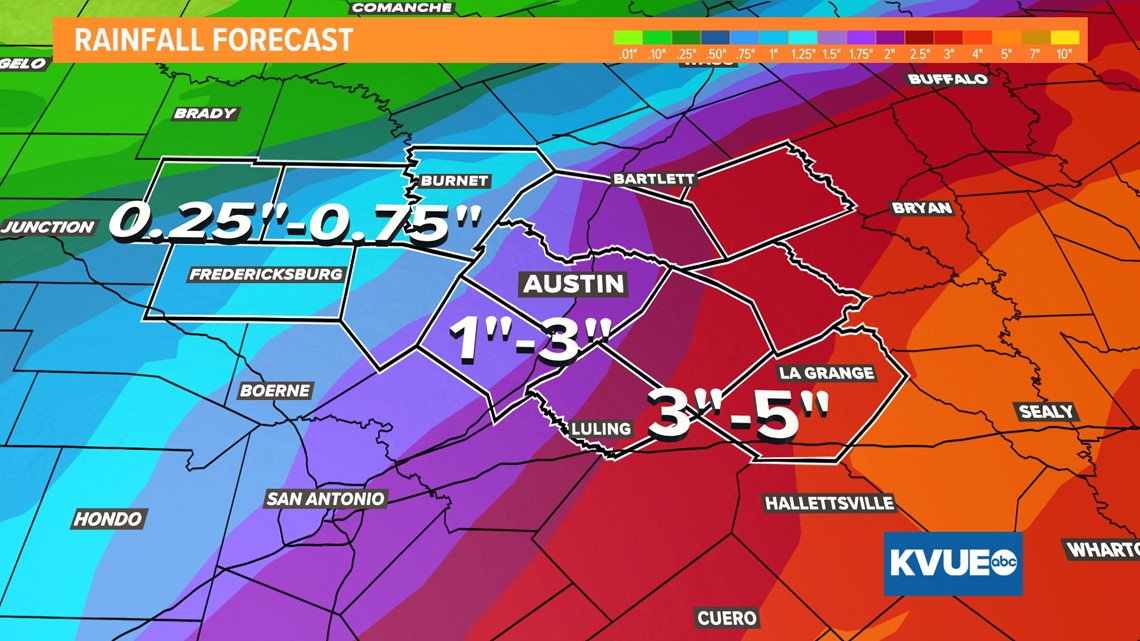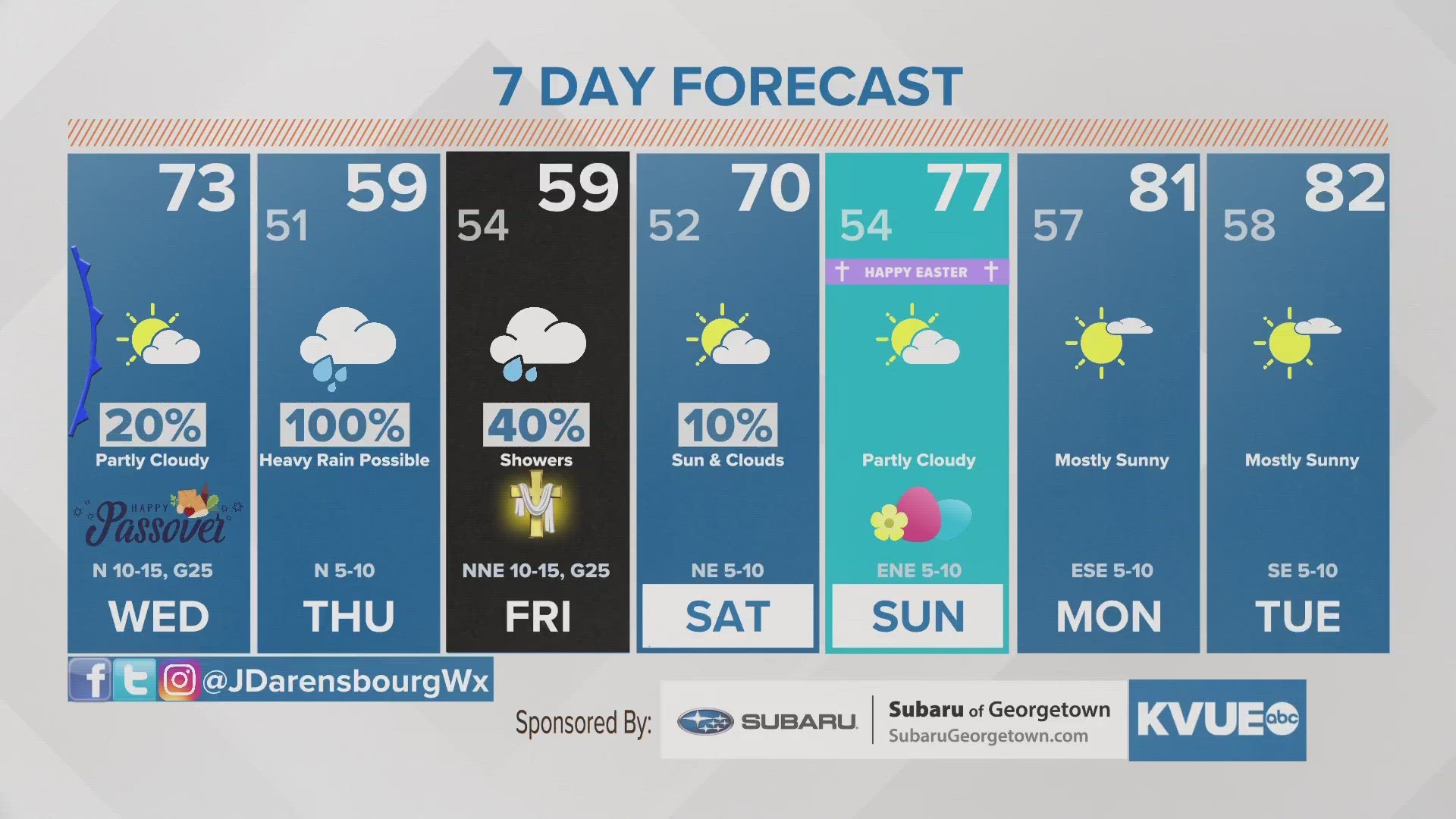AUSTIN, Texas — April is known for its showers, and they are right on time as we end the first week of the month on a wet note.
So far, the forecast is calling for generalized rainfall amounts between 1 and 3 inches between Thursday and Friday, but we could see isolated rainfall totals as high as 5 to 6 inches. This rainfall will be largely beneficial to our area; however, the ongoing drought issues could cause portions of the region to be susceptible to flash flooding.
When it comes to flash flooding there are some important things to remember.
1. Turn around don't drown
This is probably one of those phrases you hear most often when it comes to flooding, especially when it has to do with flooded roadways. One to 2 feet of rushing water will carry away most cars or SUVs.
People vastly underestimate the strength of flowing water. Flooding is the most dangerous of all thunderstorm-related hazards.
When water wells up across roads, it can be much deeper than it appears. Water can also hold hazardous debris that can injure you, broken tree limbs, electrical wiring and other sharp objects. It can even conceal where roads are washed away.
2. Get to higher ground
While 1 to 2 feet of water can carry a car downstream, just 6 inches of water is enough to sweep a person away.
Within the first moments you realize you are in danger, seek the highest ground possible. Water will always flow from the highest point of elevation to the lowest-lying areas. To make sure you are not in the way, go up, and as fast as possible.
Inside a house, you will want to get to the highest room available, even the roof if need be. If flood waters begin to touch electrical sockets and you hear popping or buzzing, avoid the water at any cost – it may have an electrical current running through it.
3. Avoid.
The best and most universal tip for surviving a flash flood is to avoid the water as much as you can.
Just like with severe thunderstorms, you can do this by staying informed and having multiple ways to get alerts. This way you know where the water is, where it may be flowing, and how to get get out of the way.
NOAA radios, the KVUE app and social media alerts are all great resources to have. Here is a link to more flash flood and catastrophic flood tips from the National Weather Service.



